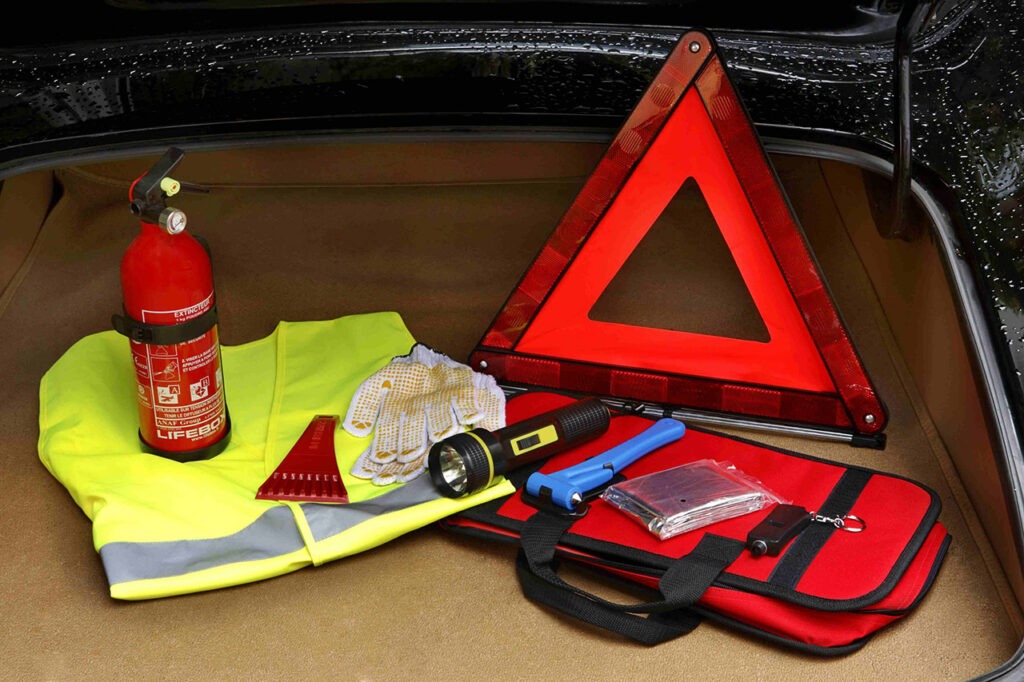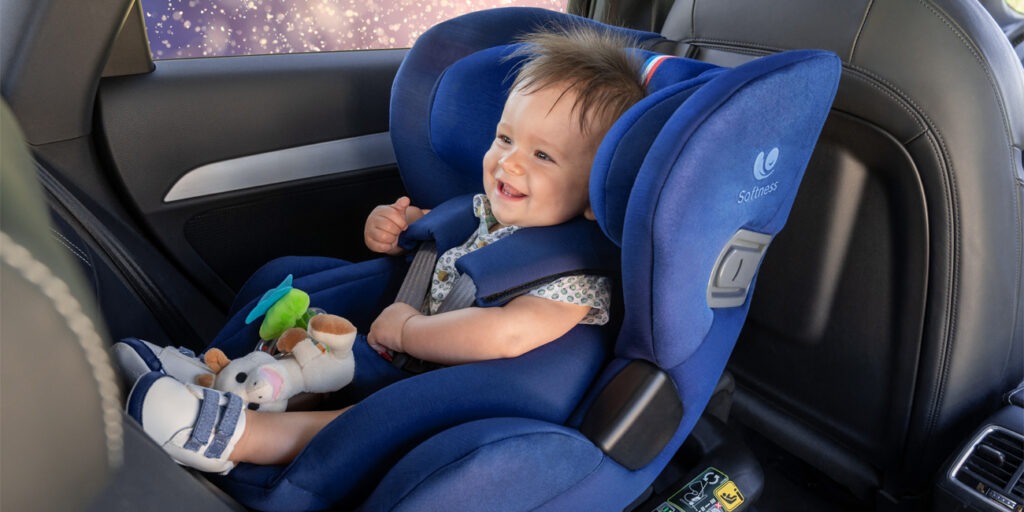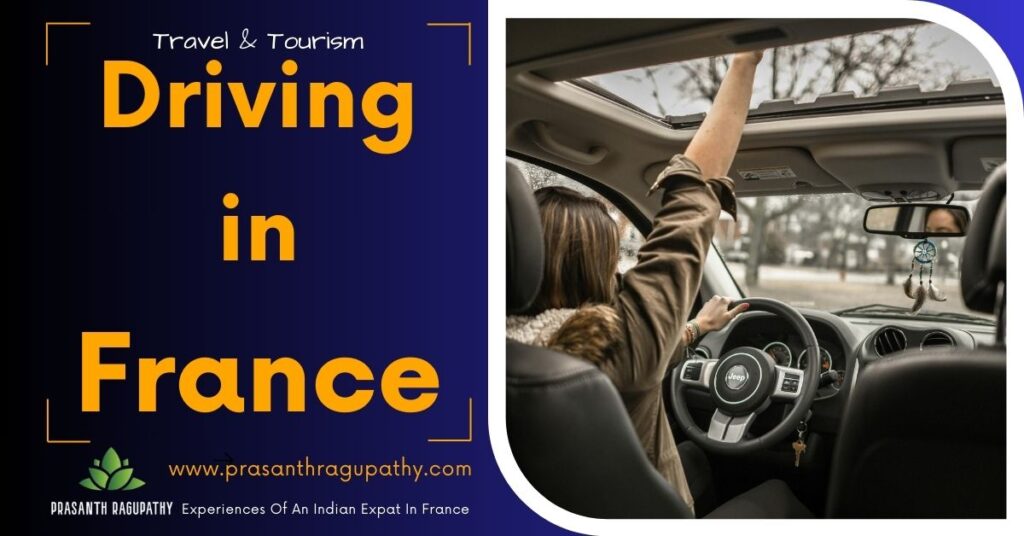Published on: November 10, 2024 | By: @rprasanth_kumar
Topics Covered 📚
Mandatory and recommended Equipments
For your safety and the safety of other drivers on the road, you must ensure that your car is properly equipped. If your vehicle is checked, the absence of these equipment, or their poor condition, may constitute an offence and expose you to a fine.
During winter months, a few additional equipments are mandatory on certain roads in France. Please refer to Winter Tire and Chain obligations in France: Driving.
| Equipment in Car | Regulations in France |
| Safety Vest | Mandatory and must be used when the vehicle is immobilized on the road. If not, a fine of up to €750 is applicable |
| Emergency Triangle | |
| Tires | Driving with bad tires is prohibited. If not, a fine of up to €750 is applicable |
| Spare Tire + Equipment | Highly recommended but not mandatory |
| Windshield & Front side windows | Must be sufficiently transparent, both from the inside and the outside. If not, a fine of up to €750 is applicable + 3 points lost. |
| Headlights | Must be working. If not, a fine of up to €450 is applicable |
| Breathalyzer | Not required |
| Number Plates | Mandatory in the official format and visible. If not, a fine of up to €750 is applicable |
| Horn | Mandatory & in working condition |

Isofix Child Seats
Every person in the vehicle, especially children, must be correctly secured with a seatbelt or child restraint system. Only one person is allowed per seat, and each person must be individually secured. Drivers are responsible for ensuring passengers under 18 are properly restrained, with a seat belt or a child seat.
Child Seats Until Age 10: Children up to age 10 must travel in a child seat (isofix) suitable for their age, size, and weight.
- Up to 83 cm (birth to around 15 months, up to 10 kg): The child is placed in a rear-facing car seat, in a semi-reclined position, in either the front or back of the car. This position offers maximum protection in a frontal collision. If the seat is in the front, the airbag system must be deactivated.
- Up to 1 meter (around 9 to 18 kg): When the child reaches 1 meter, they can sit more comfortably and resist forward motion better during braking. They can use a harnessed bucket seat or a seat with a protective shield.
- Up to 1.5 meters (up to 10 years old): The child’s height and build require a booster seat with a backrest until age 10. Seats may be approved for different weight groups (15 to 25 kg and 22 to 36 kg) or height ranges.
Restrictions for Front Seats: Children under 10 cannot sit in the front unless in specific situations (e.g., no rear seats or rear seats are already occupied by children under 10), and they must face backward with airbags disabled if in an appropriate child seat.
Penalties for Non-Compliance: A driver who fails to comply with these obligations shall be penalized by a fine up to €750. In general, it is a flat-rate fine of €135.
Exceptions: However, the child seat is not mandatory for a child who is in one of the following situations:
- A child whose body shape is suitable for the use of seat belts (the car seat is up to 1m50).
- A child with a medical certificate of exemption issued by a doctor approved by the prefecture.
- The child is transported in a taxi or public transport.
Note: In the event of a collision at 50 km/h, the unrestrained child is at the same risk as if falling from the fourth floor. At this speed, an unattached child becomes a projectile over 1 tonne.

Guidelines about various equipments
Safety Vest:
- Must be reflective and carry CE marking.
- Should be stored within easy reach.
- Required to be worn whenever exiting a vehicle during emergencies, day or night.
Warning Triangle:
- Must be marked with E 27 R certification.
- Place the triangle approximately 30 meters from the vehicle in case of a breakdown on the road, unless it’s unsafe to do so (e.g., on highways).
Vehicle Lighting Requirements:
- Headlights: Two or four high beams illuminating up to 100 meters, and two low beams illuminating up to 30 meters without causing glare.
- Position Lights: Two front lights visible up to 150 meters and rear position lights in red, also visible up to 150 meters.
- Indicators: Four orange blinkers (two front, two rear).
- Fog Lights: Two front (white/yellow) and two rear (red).
- Stop Lights: At least two red lights at the rear.
- Keeping lights in good working order is required, with fines for non-compliance, and your vehicle may be immobilized.
- Carrying spare bulbs isn’t mandatory but highly recommended to quickly replace any defective bulbs and avoid penalties.
Tire Condition and Spare Wheel:
- Driving with damaged or worn tires can lead to fines and potential vehicle immobilization.
- It’s recommended to have a spare tire and necessary tools in your car for emergency replacements.
Windshield and Window Visibility
Requirements:
- Windshield and front windows must provide clear visibility and transmit at least 70% of light.
- They should not alter or distort colors and should allow the driver an unobstructed view.
- Vehicles must have at least one working windshield wiper and a functioning washer system.
- Tinted front windows (driver & passenger side) are prohibited, and failing to meet visibility standards may result in fines.
License Plates:
- All motor vehicles require certified license plates at both the front and rear.
- Non-compliance or absence of a license plate can lead to a penalty of up to €750.
Related English-French Vocabulary
- Safety Vest (gilet de sécurité or gilet jaune)
- Emergency Triangle (triangle de présignalisation)
- Tires (Pneu)
- Spare Tire (roue de secours)
- Windshield (pare-brise)
- Windows (vitres)
- Headlights (phares de voiture)
- Position Lights (feux de position)
- Indicators (clignotants)
- Fog Lights (feux de brouillard)
- Stop Lights (feux d’arrêt)
- Breathalyzer (éthylotest)
- Number Plates (plaques d’immatriculation)
- Horn (klaxon)
Support This Blog!
If you’ve found my articles helpful, interesting or saving your time and you want to say thanks, a cup of coffee is very much appreciated!. It helps in running this website free for the readers.


